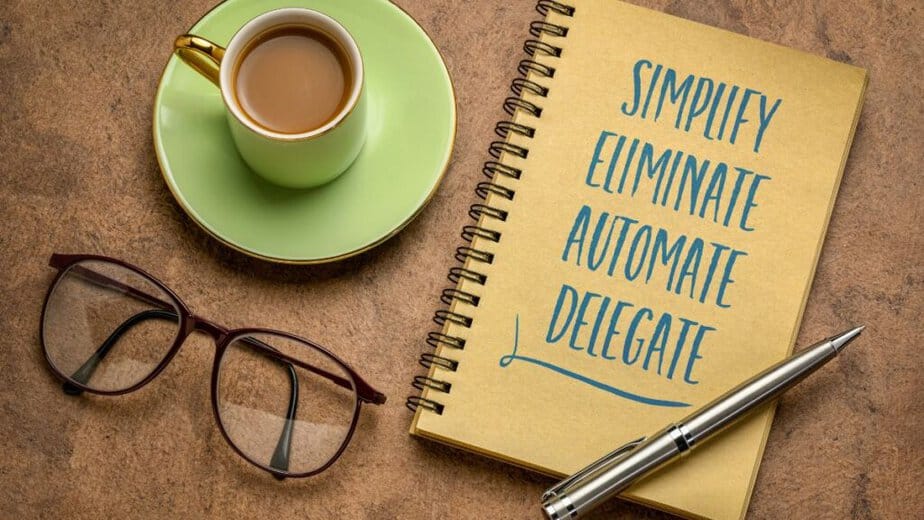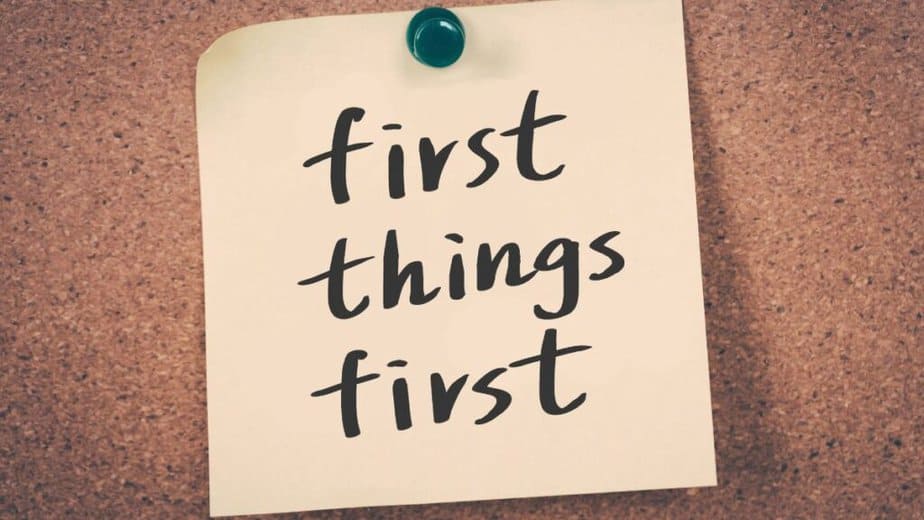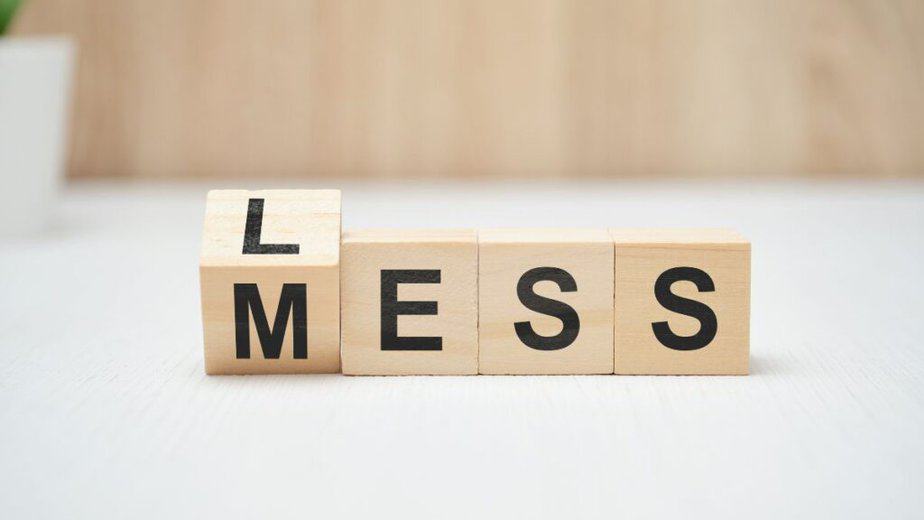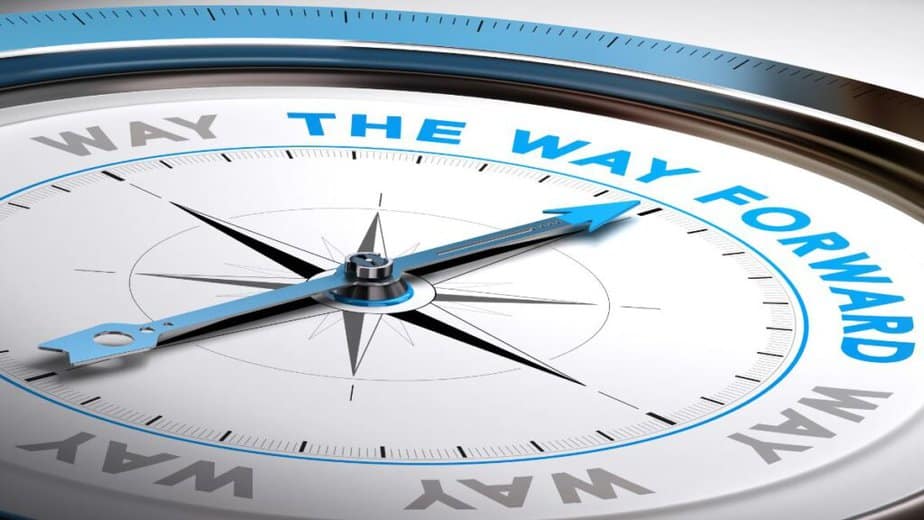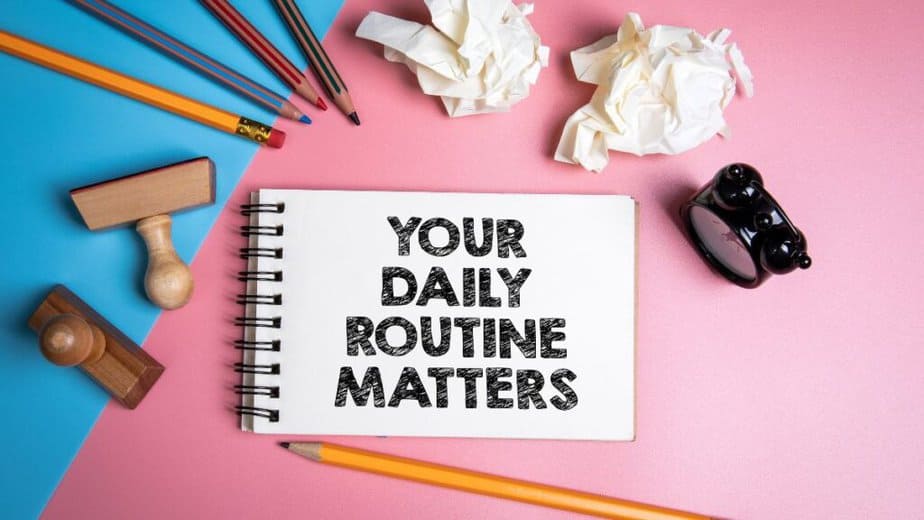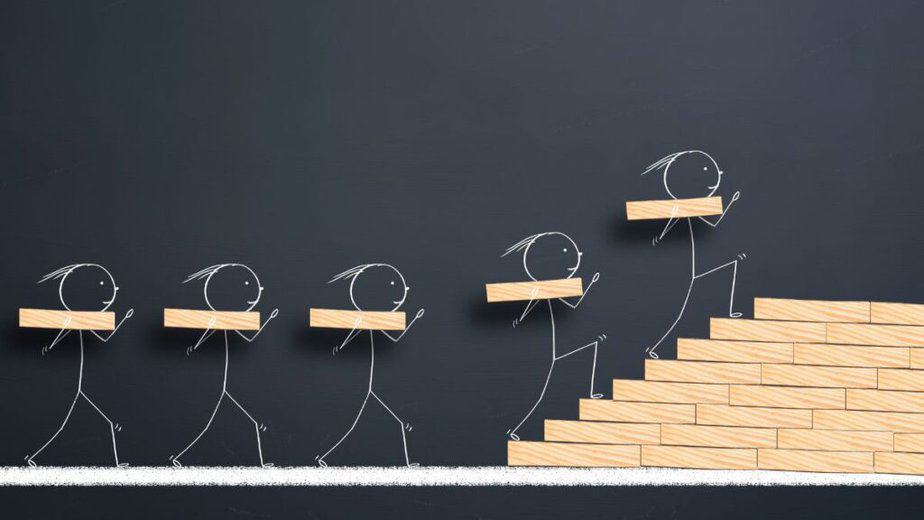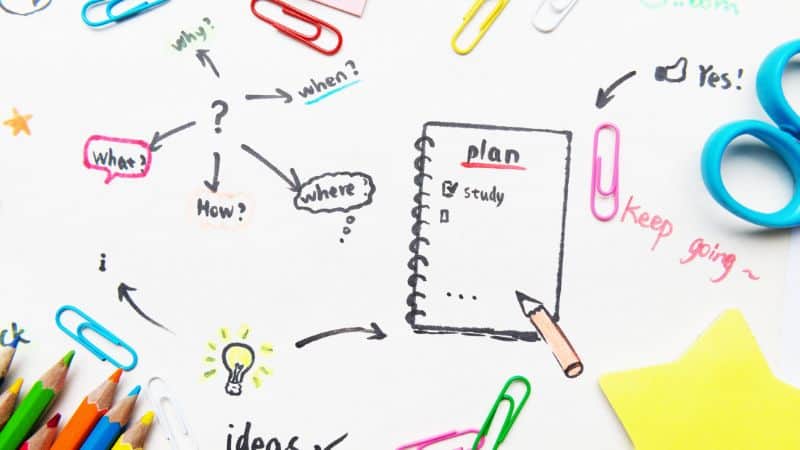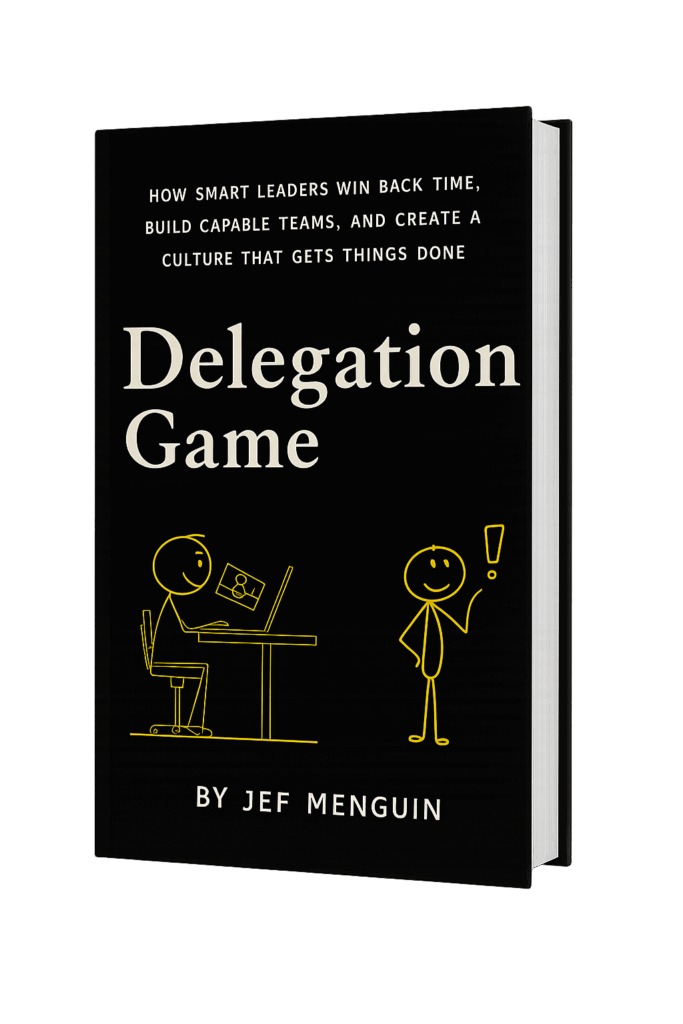Simplify to magnify. Strip away the non-essential so you can amplify what truly matters.
We all chase breakthroughs – in our careers, in our personal lives, and in our growth. But the path to true achievement isn’t in doing more.
It’s in doing less, but better.
Most people find it difficult to simplify their lives.1 Your ability to simplify what others deem to be too complicated will lead you to a more fulfilling, effective, and meaningful future.
We’ve been led to believe that to succeed, we must be perpetually busy, juggling everything life throws at us. Yet, this relentless pursuit often leads us further from our goals, not closer. Magnifying results doesn’t require adding more to our plates.
Strip away the non-essential. Hone in on what truly matters.
We will unravel the myths of productivity that have long misled us. We’ll discover that by simplifying our approach, we can amplify our outcomes.
Productivity Myths
We often cling to a set of myths about productivity that promise to lead us there.
These myths2, though widely accepted, are far from the truth.

We dream of a life where we can have it all. But in reality, our attempts to grasp everything only leave us with less.
First, let’s tackle the big myth: being busy equals being productive. We wear busyness like a badge of honor, thinking that a packed schedule is a sure sign of progress. However, real-life experiences reveal a different story.
Multitasking and constant busyness often lead to less efficiency, not more.
Why do we believe that more is better?
It’s a blend of societal norms and persistent misinformation. We’re bombarded with messages that glorify the ‘hustle culture’,3 pushing us to believe that non-stop work is the only path to success.
This relentless push often overshadows the importance of focused effort and the power of simplicity.
Understand these myths and their roots so you can start to see the cracks in the foundation of traditional productivity wisdom. It sets the stage for us to explore a more effective approach.
Quality over quantity, focus over frenzy.
Traditional Thinking
The path where we stretch ourselves too thin in the pursuit of ‘more’4, often leads us to a state of burnout. This isn’t just a feeling; it’s a well-documented phenomenon.
Work-related stress, stemming from trying to juggle too many tasks and responsibilities, doesn’t just diminish our productivity—it harms our well-being. When we’re constantly in a state of overdrive, our mental and physical health pays the price.
This isn’t progress; it’s a step back.
We set ambitious goals, thinking that the more we aim for, the more we achieve. However, research in goal-setting and achievement suggests a different truth.
When goals are too numerous or too broad, our efforts become scattered. We lose the ability to focus intensely on any one objective, leading to a paradoxical decrease in overall achievement.
I was trying to catch too many balls at once and ended up dropping them all.
In our relentless pursuit of doing more, we often overlook opportunities for deeper, more meaningful experiences.
As we bury ourselves in work, we neglect other aspects of life that foster true satisfaction and growth—relationships, hobbies, rest, and personal development.
These are the elements that enrich our lives, yet they’re frequently sidelined in the race for ersatz success.
In understanding these downsides—burnout from overextension, the inefficacy of misguided efforts, and the lost opportunities in constant hustling—we start to see the cracks in the traditional approach to productivity.
It becomes clear that doing more isn’t the answer.
Instead, we should focus on doing what matters most, and doing it well.
This shift in perspective sets the stage for exploring how simplify our efforts so we can attain sustainable success.
Many find it hard to grasp how doing less can lead to more. I often say, “Do less, achieve better.” Simplifying isn’t about doing less overall—it’s about focusing on what really matters. Choose wisely and make the most impact with fewer actions.
Simplify to Magnify
Less is great. Let me present to you a sustainable alternative to the relentless pursuit of more. You don’t have to do less for the sake of it; you will streamline your efforts to amplify your impact.
At the heart of making things simple lie a few key principles.
- focus
- prioritization
- efficiency
Focus is about directing our energy to what truly matters, cutting through the noise of non-essential tasks.
Prioritization involves ranking our tasks in order of true importance, not just urgency.
And efficiency is about finding the most effective way to accomplish these tasks.
Research in decision-making and cognitive psychology5 supports this approach. Simplicity in our decision-making processes leads to more effective outcomes, reducing decision fatigue and increasing satisfaction with our choices.
The joy derived from an exponential improvement in a single, focused area often outweighs the fleeting joy of minor advancements in multiple directions.
When we achieve significant improvements in areas that truly matter to us, our sense of accomplishment and happiness multiplies.
Deep, focused work in a chosen area not only leads to better results but also contributes significantly to our overall well-being and happiness.
We can change how we work and transform how we live. We may make each effort count. Ensure that every step we take moves us significantly forward in our journey toward personal and professional fulfillment.
Since starting my speaking career in 2004, I’ve tried various business models and learned from failures. The key takeaway? I don’t need to do everything. Instead, I focus on identifying and communicating with my top 100 dream clients.

Master the Art of Simple
Mastering the art of simple is not just about doing less, but about doing right. It’s a skill, an approach that can transform both our work and personal lives.
To start, we need to identify where simplification can make the most impact. Look at your daily tasks, your commitments, your goals. Ask yourself: What really adds value to my life? What activities yield the most significant results?
This process of identification is the first critical step towards simplification.
Once you’ve identified these areas, it’s time to embrace the essence of essentialism. Essentialism is about focusing on what’s truly essential, eliminating the unnecessary. It’s not just a productivity hack; it’s a way of life.
People who adopt a more essentialist approach in their lives report higher levels of satisfaction and happiness. They’re not bogged down by the clutter of unnecessary commitments and possessions.
Instead, they enjoy the freedom and clarity that comes from focusing on the essentials.
Consider the stories of successful entrepreneurs, artists, or writers who achieved breakthroughs not by spreading themselves thin across multiple ventures, but by concentrating on one vision, one project, one idea at a time.
Simplification isn’t about limiting ourselves – it’s about honing in on what truly matters and pursuing it with undivided attention and energy.
In mastering the art of simple, we learn to cut through the clutter, to discern the vital few from the trivial many. We learn to allocate our resources – time, energy, attention – to what truly matters. We set ourselves on a path not just towards greater productivity and success, but towards a more fulfilling and meaningful life.
Change ways.
Transitioning from the philosophy of simplification to its practical application is key. Here’s a step-by-step guide to help you start this transformative journey.
Declutter your space and schedule. Begin with your immediate environment. Remove physical clutter from your workspace and home. Then, look at your schedule. What meetings, tasks, or activities provide little value? Eliminate them. Decluttering creates mental clarity and space for important tasks.
Set clear, focused goals. Define what success looks like for you in specific areas of your life. Keep these goals few and meaningful. This clarity will help you stay focused and avoid being sidetracked by less important tasks.
Prioritize ruthlessly. Use tools like the Eisenhower Matrix to categorize tasks by importance and urgency. Focus on tasks that are important but not necessarily urgent, as these often have the most significant long-term impact. Always think first thing first.
Embrace the power of ‘No’. Learn to decline opportunities and requests that don’t align with your goals. Saying ‘no’ frees up time and energy for tasks that truly matter.
Establish routines and systems. Create routines that foster efficiency. Systems can include time-blocking for deep work or automating repetitive tasks.
Regular reflection and adjustment. Regularly review your goals and the effectiveness of your approach. Be willing to adjust your strategies to find what works best for you.
To illustrate the power of these steps, let’s look at real-life success stories.
Warren Buffett, Investor: Known for his remarkable investment strategies, Buffett attributes much of his success to simplicity. He focuses on understanding a few key metrics and principles when evaluating potential investments, rather than getting lost in the complexities of financial analysis. Buffett also leads a famously simple lifestyle for a billionaire, residing in the same house he bought in 1958 and avoiding a lavish lifestyle.
Marie Kondo, Organizing Consultant and Author: Marie Kondo’s philosophy of tidying up and decluttering has revolutionized how people organize their homes and lives. Her method involves keeping only those things that “spark joy,” encouraging a minimalist and simplified lifestyle that prioritizes joy and value.
Steve Jobs, Co-founder of Apple: Jobs was known for his minimalist approach, both in his personal style and in his professional work. He wore a uniform of a black turtleneck and jeans to reduce decision fatigue. In product design, he emphasized simplicity and user-friendliness, which became a hallmark of Apple products.
Tim Ferriss, Author and Entrepreneur: Ferriss advocates for simplification in work and life through his books, such as “The 4-Hour Workweek.” He champions the idea of outsourcing lesser tasks, focusing on what is essential, and using the Pareto principle (80/20 rule) to maximize efficiency.
Leo Babauta, Author of Zen Habits: Babauta is a proponent of minimalism in life and work. He emphasizes the importance of simplifying tasks, decluttering, and focusing on a small number of meaningful activities. His own life transformation and the changes he implemented to focus on what truly matters are well-documented in his writings.
These individuals demonstrate how simplification can be a powerful tool for achieving greater focus, efficiency, and balance in both personal and professional realms. Their stories provide concrete examples of how the principles of simplification can be applied in real life, leading to significant and meaningful accomplishments.
We can move from being perpetually busy to being purposefully productive, turning the principle of ‘simplify to magnify’ into a lived reality.
Increase your impact.
When we embrace simplification, the benefits extend far beyond the immediate. The impact is deep and lasting. It’s not just about clearing a desk or freeing up an afternoon.
Simplification reshapes how we think, work, and live, leading to profound, long-term benefits.
Consider the sustained advantages of a simplified life. Longitudinal studies on lifestyle changes show that people who adopt a minimalist approach experience enduring improvements in well-being.
They report lower stress levels, increased happiness, and better health. These aren’t fleeting gains; they are lasting shifts that improve the quality of life over time.
But the magic of simplification isn’t confined to just personal spaces.
It can be applied broadly across various domains of life. In the realm of work, for example, simplifying processes and focusing on key tasks leads to greater productivity and job satisfaction.
In personal relationships, prioritizing meaningful interactions over quantity creates deeper and more fulfilling connections.
The principle of simplification, therefore, isn’t just a strategy for the present. It’s a blueprint for a more fulfilling, effective, and meaningful future.
By adopting and applying these principles broadly, we don’t just change our current situation; we shape our trajectory for years to come. Making things simple is the key that unlocks potential, not just for now, but for the long term.
Amplify what truly matters to you.
Simplification is more than a method; it’s a mindset. Simplification isn’t about diminishing our aspirations or capabilities; it’s about magnifying them through clarity, focus, and purpose.
Strip away the non-essential so you can amplify what truly matters.
The stories, studies, and examples we’ve delved into all point to a singular truth: embracing simplicity leads to richer, more productive, and more fulfilling lives.
Find depth in the deliberate, strength in the streamlined, and joy in the journey of focusing on what counts.
The art of simple is an ongoing journey.
A journey towards greater clarity, efficiency, and satisfaction in all facets of life. The path of simplicity is open to all, but it requires a conscious decision to step away from the clutter and chaos of the ‘more is better’ mindset.
Begin small, choose one area of your life or work, and apply the principles of simplification. Observe the changes, and feel the difference. Let this be the start of a transformative journey towards a simpler, clearer, and more magnified life.
Simplify to magnify.
Next: First Things First
Resources
Explore the following resources. There are easy ways to you do in order for you to simplify your life.
Articles
Common Questions
Footnotes:
- People struggle to simplify their lives due to the fear of missing out, attachment to possessions, societal pressures to succeed, and difficulty in prioritizing what truly matters. This leads to cluttered schedules and spaces, making simplicity elusive. ↩︎
- Why do people believe in productivity myths? People believe in productivity myths because they offer simple solutions to complex problems, making us feel more in control and hopeful about improving our efficiency and success without needing to deeply understand our work habits or the underlying challenges we face. ↩︎
- Hustle culture glorifies overwork, leading to burnout, stress, and neglect of personal life and health. It can damage relationships, reduce productivity over time, and harm mental and physical well-being. ↩︎
- Tony Robbins promotes taking “massive action” to achieve goals. While motivating, it often leads to burnout because people push themselves too hard without rest or balance, ignoring their limits and well-being. ↩︎
- Cognitive psychology–the study of how people think and process information–helps researchers understand the human brain. It also allows psychologists to help people deal with psychological difficulties. Learn more at VeryWell Mind. ↩︎
